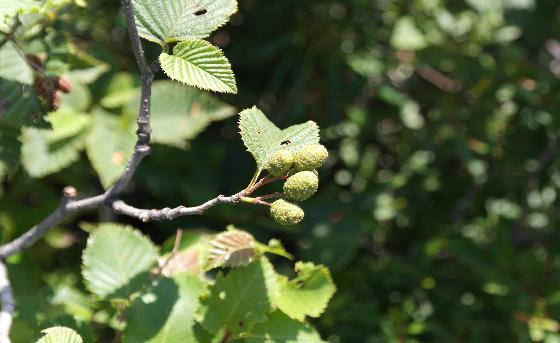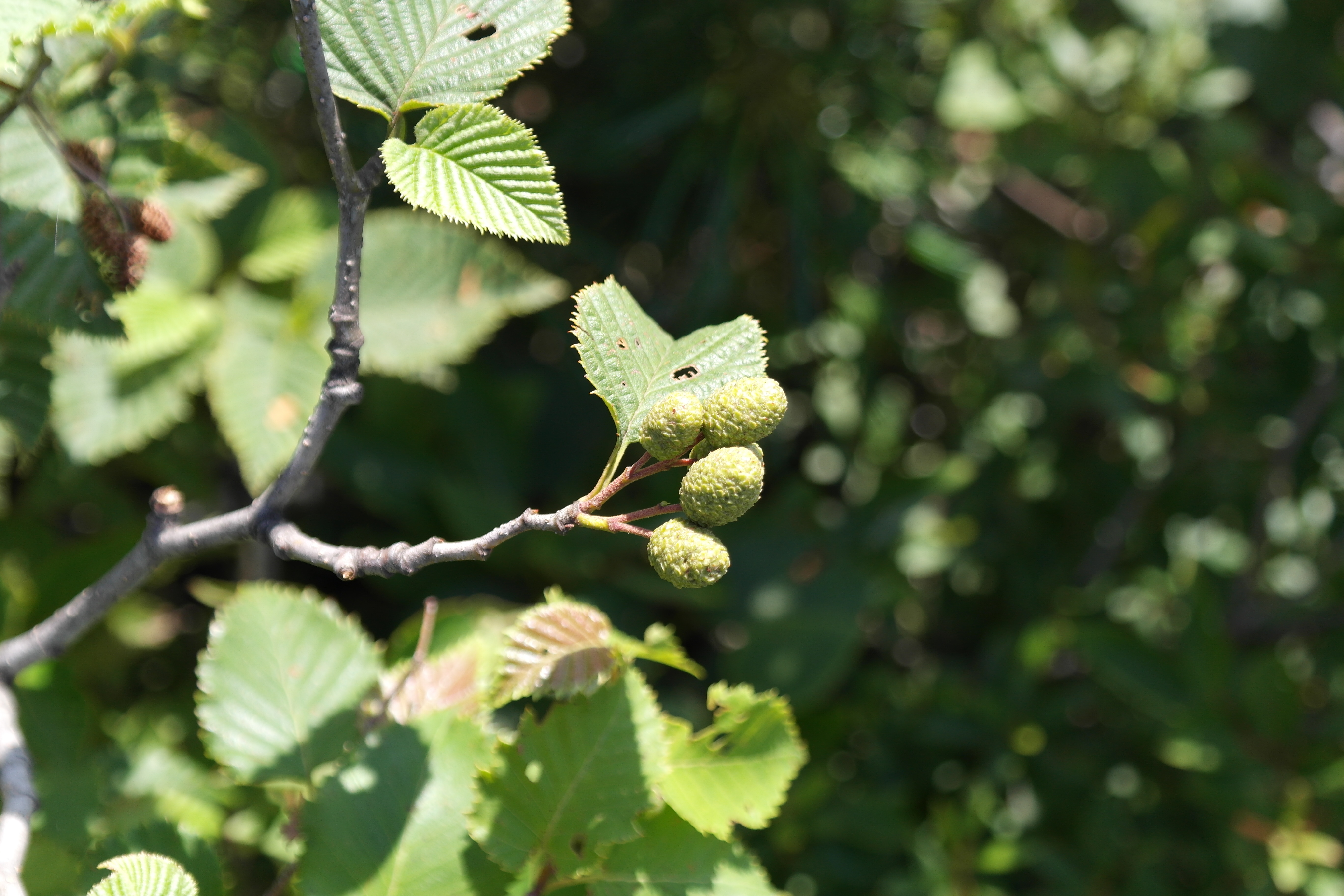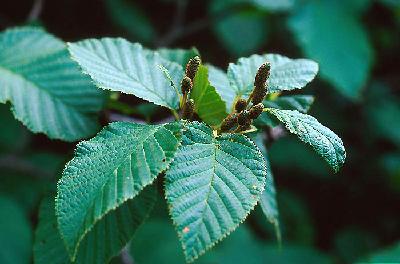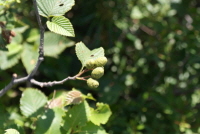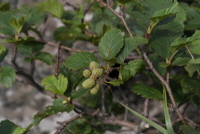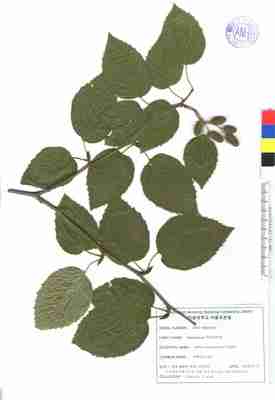▶중국과 일본, 캄차카반도에도 분포한다.
▶중부이북의 고산지대에서 자란다.
▶고산지대 습원에서 자란다. 내한성과 대기오염에 대한 저항성이 크며 다소 내건성도 있다. 음지나 양지에서 모두 잘 자란다.
잎은 달걀모양, 타원형 또는 긴 달걀모양이고 첨두이며 원저 또는 넓은 예저이고 길이 6-10cm로서 선형(腺形)의 톱니가 있으며 표면은 털이 없고 뒷면은 연한 녹색이며 지점(脂點)이 많고 맥(脈)위에 털이 있다. 엽병은 길이 1-2.5cm이고 측맥은 10-12쌍이다.
꽃은 암수한그루로서 5-6월에 핀다. 웅화수(雄花穗)는 1-2개씩 달리고 길이 4-8cm로 밑으로 처지며 자화수(雌花穗)는 타원형이고 길이 1-1.5cm이다.
과수는 길이 1.5㎝이하로 타원형이고 대는 길이 1.5-2.0㎝이다. 열매는 길이 2mm로서 타원상 달걀모양이고 날개는 열매의 폭보다 좁으며 9월에 익는다.
▶털만주오리나무(for. pubescens T. Lee) : 잎 뒷면에 연갈색 털이 있다.
▶붉은털만주오리나무(for. rufinervis T. Lee): 잎 뒷면 맥위에 잔털이 있다.
▶함북오리나무(for. barbinervis Nak.): 잎 뒷면 맥위에 선 털이 있고 과수가 많이 달리며 잎이 작다.
Distribution
China, Japan, Kamchatka , Korea (Northern center)
Stems
Erect, dark green, white horizontal lines
Leaves
Ovate or elliptic or long ovate, apex acute, base rounded or wide acute, spinose serrate, pubescent on vein
Habit
High mountain, tolerance to cold and air pollution
English common name
Northeast Asian alder
Life cycle
Deciduous shrub
Flowering
May-Jun.
Seed production and maturing
Sep.
Height
5m
Fruit
Elliptic ovate, below to 1.5cm
Use
Dye plant, cure for diarrhea and bleeding
Conservation status
Rare and endangered species

 식물자원
식물자원

 국가생물종지식정보시스템 >
국가생물종지식정보시스템 > 





